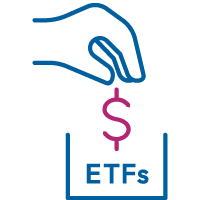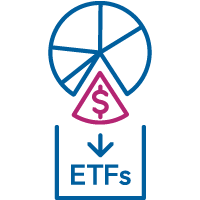ETF TAX EFFICIENCY
Don't skip opportunities to improve portfolio tax efficiency using ETFs
How can active ETFs be used to pursue more tax efficient portfolios?

Identify tax-loss harvesting1 opportunities

Construct fee-based models

Rebalance portfolios

Consider investing excess cash in ETFs

Reinvest dividends into ETFs

The active evolution of ETFs
GET SUPPORT
We're here to help.
Partner with an experienced team to identify opportunities
ADDITIONAL RESOURCES
1 Tax-loss harvesting involves selling an investment that has lost value (from the price the investor originally paid for it) to create a capital loss that can be used to offset capital gains on another investment, either now or in the future.
Investments are not FDIC-insured, nor are they deposits of or guaranteed by a bank or any other entity, so they may lose value.
Investors should carefully consider investment objectives, risks, charges and expenses.
This and other important information is contained in the ETF prospectuses and summary prospectuses, which can be obtained from a financial professional and should be read carefully before investing.
Capital Group exchange-traded funds (ETFs) are actively managed and do not seek to replicate a specific index. ETF shares are bought and sold through an exchange at the then current market price, not net asset value (NAV), and are not individually redeemed from the fund. Shares may trade at a premium or discount to their NAV when traded on an exchange. Brokerage commissions will reduce returns. There can be no guarantee that an active market for ETFs will develop or be maintained, or that the ETF's listing will continue or remain unchanged.
This material does not constitute legal or tax advice. Investors should consult with their legal or tax advisors.
Statements attributed to an individual represent the opinions of that individual as of the date published and do not necessarily reflect the opinions of Capital Group or its affiliates. This information is intended to highlight issues and should not be considered advice, an endorsement or a recommendation.
All Capital Group trademarks mentioned are owned by The Capital Group Companies, Inc., an affiliated company or fund. All other company and product names mentioned are the property of their respective companies.
Use of this website is intended for U.S. residents only. Use of this website and materials is also subject to approval by your home office.
Capital Client Group, Inc.
This content, developed by Capital Group, home of American Funds, should not be used as a primary basis for investment decisions and is not intended to serve as impartial investment or fiduciary advice.


